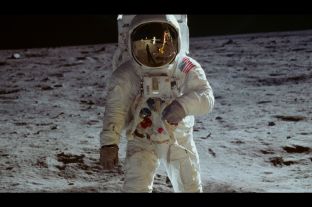
JULY 8, 2019. It’s been over three years since I last posted to this blog. Not that I stopped writing. In addition to my long running monthly Devlin’s Angle for the Mathematical Association of America, early this year I launched the Stanford Mathematics Outreach Project (sumop.org), which has its own blog. The former is aimed, fairly broadly, at high school on college level mathematics instructors and, to some extent, their students. The latter focuses on K-12 mathematics teachers, and was designed to complement, and collaborate with, Stanford University Mathematics Education Professor Jo Boaler’s youcubed project.
Having retired from full-time employment at Stanford at the end of last year, however, I find I have time to reflect on other mathematics related issues that don’t entirely fit on either of those blogs. Time then, to revive this outlet. To be sure, it was frequently a toss-up whether to post on profkeithdevlin.org or Devlin’s Angle, and the same has already occurred with the SUMOP blog. What tipped the scales in favor of reviving this blog was the upcoming Fiftieth Anniversary of the Apollo 11 moon landing on July 20, 1969.
On June 23, CNN broadcast a new documentary of the Apollo mission, using video footage never previously seen. You can watch the whole thing (just under two hours), for a small charge, on YouTube or Amazon Prime. For reasons that will momentarily become clear, I had to watch it at the first opportunity. So I joined the many others (mostly around my age, I suspect) to view the first screening. Soon after the movie started, I decided to live-tweet my reactions. The remainder of this post is a transcription of that twitter stream, with the inevitable twitter-typos cleaned up. [For the record, the original twitter stream can be found here.]
STREAM
Watching the CNN documentary about Apollo 11. My context. At the time, in July 1969 I was a 22 year-old, English speaking, white male with a new math degree. Apollo was an incredible achievement for the group I was a de facto member of 1/
I was fluent in all of NASA’s languages: English, mathematics, white male machismo. By 2001, when I wrote my book The Math Gene, my understanding of math had increased to appreciate its role in the creation and management of human teams 2/
Here is the PROLOGUE of The Math Gene 3/
In fact, as I have said often, I became a mathematician because I wanted to be part of the space era. See for example my recent video interview 4/
Had I been born just a few years earlier, to American parents rather than English, I would have done all I could to be one of those math and engineering geeks at Johnson Space Flight Center whose names were at the time as familiar to me as were those of my family 5/
Watching that video footage today, now as a holder of a US Passport and with several years of service as a mathematician to three organizations in the US Department of Defense, my reactions are complex. 6/
The thrill is still there. I would have loved to have been part of it, not merely an avid follower from the other side of the Atlantic. After I came to Stanford in 1987, with NASA Ames Research Center just down the road, I met a few of those who were involved. 7/
Moreover, some of my research found applications at NASA in the later missions of the International Space Station. But, though they involved way more complex engineering, they lacked the sheer drama of Apollo 11, … /8
… a mission that was conducted entirely by following a carefully worked out mathematical plan, in an environment where any one of millions of possible small miscalculations would bring the mission to a tragic end 9/
But here in 2019, I watched the video with other emotions. One was the degree to which Apollo 11 was, at least in its public presentation, almost exclusively a white males operation. I saw just one woman and one black male in one of the control rooms. 10/
Of course, as everyone knows thanks in large part to the movie Hidden Figures, NASA’s reality was far from that, with African American women mathematicians in particular playing a crucial role from the very early missions on 11/
That American society has moved on since the 1960s (at least in part) was brought home vividly by the dramatic contrast between the all-white-males video footage and the commercial breaks, with their carefully selected representatives of modern US society 12/
But America has also moved backwards. Instead of taking inspiration from those in the Apollo era, and seeking to do more great things, but this time in a far more inclusive way, we have an entire major party whose goal is to MAGA by going back to the 60s social divisions 13/
To do this, they try to kill anything that depends on more than 1960s scientific knowledge, and insist we do things the way they were back then. But that is not what Apollo was about!!! 14/
Apollo was about taking a bold step into the unknown. To join together and move forward into the future – “to boldly go …”, as the best known fiction of space exploration famously proclaims 15/
It doesn’t have to be space. It could be anything we choose. To those of us who felt “in the club” (i.e., white , male, math-geeky, and fluent in English), Apollo was a thrilling life experience. How about creating another one, but this time one that includes all Americans? 16/
In education? Health care? Curing famine? Addressing climate change? There’s no shortage of big goals. Indeed, those four tower above a Moon landing in terms of importance to society. All it takes is the will. Apollo happened only because President Kennedy expressed the will 17/END
